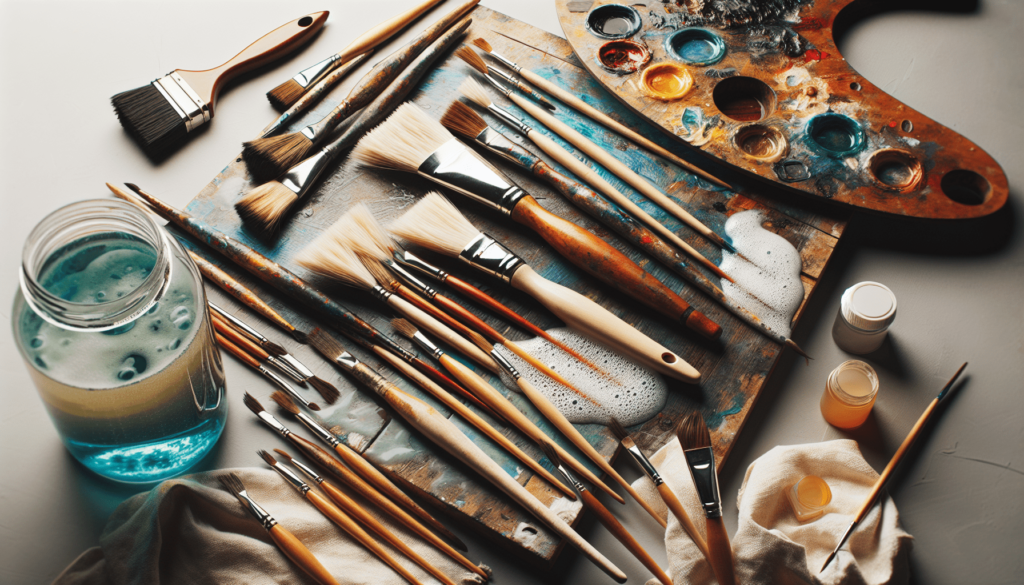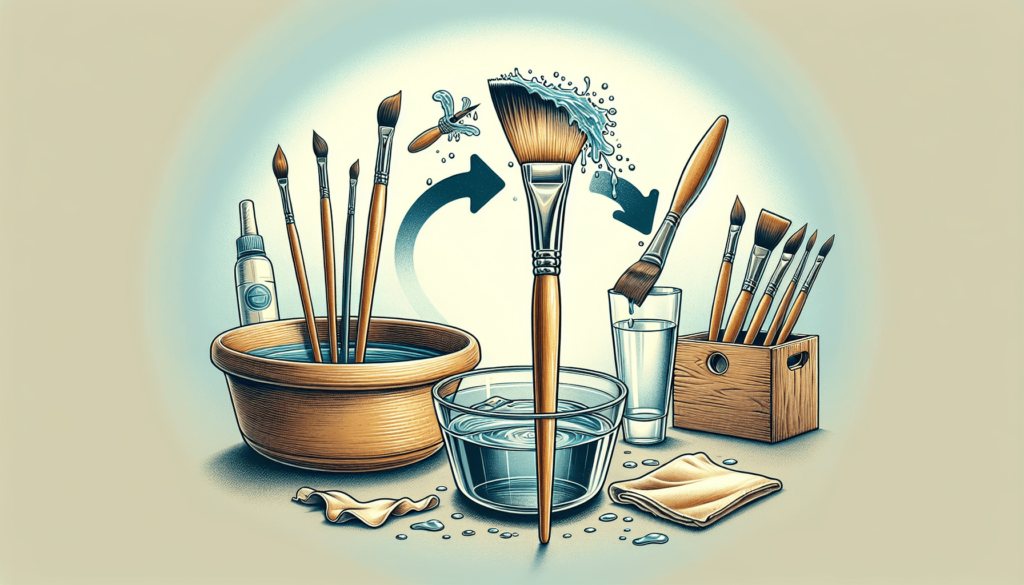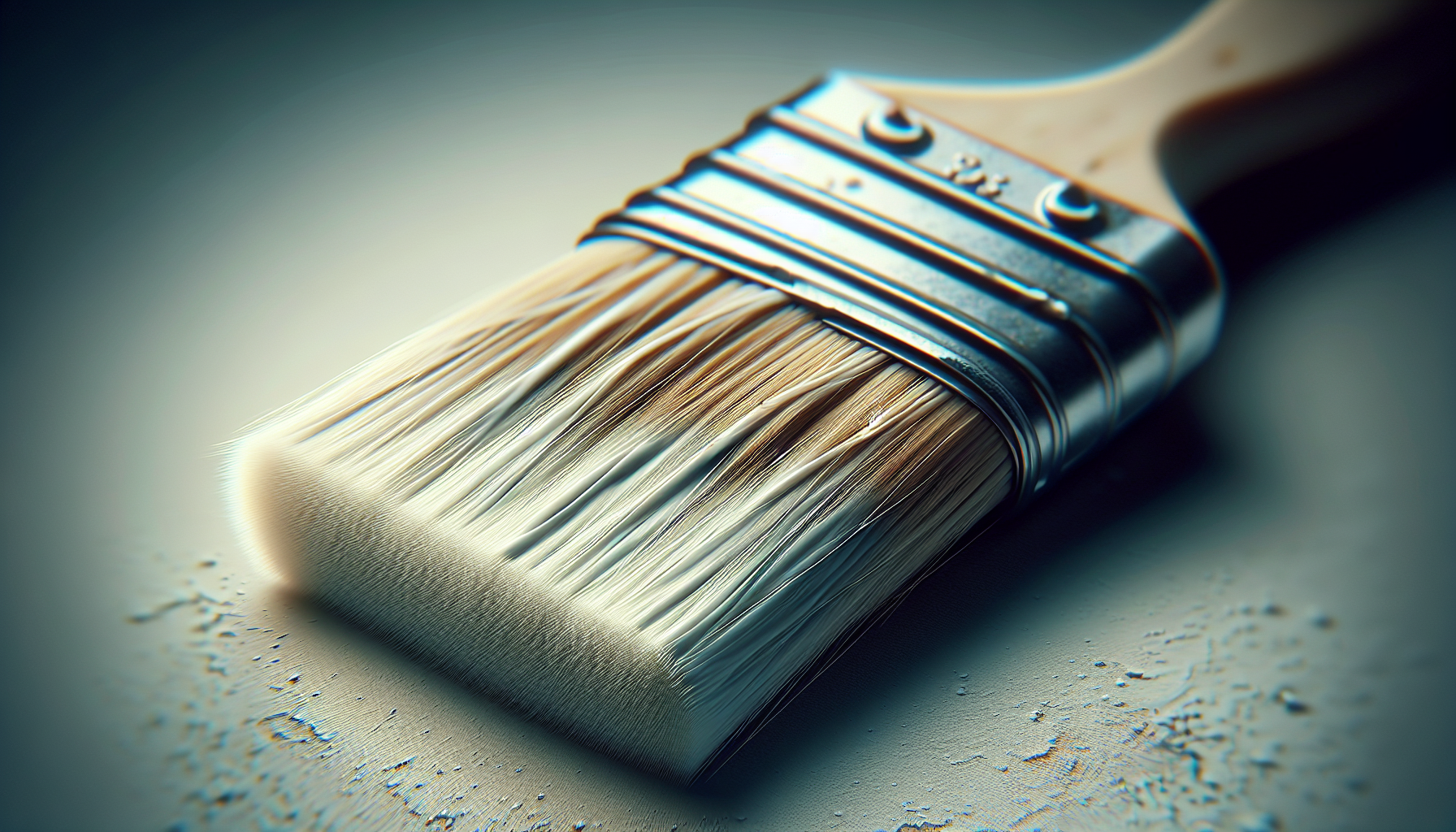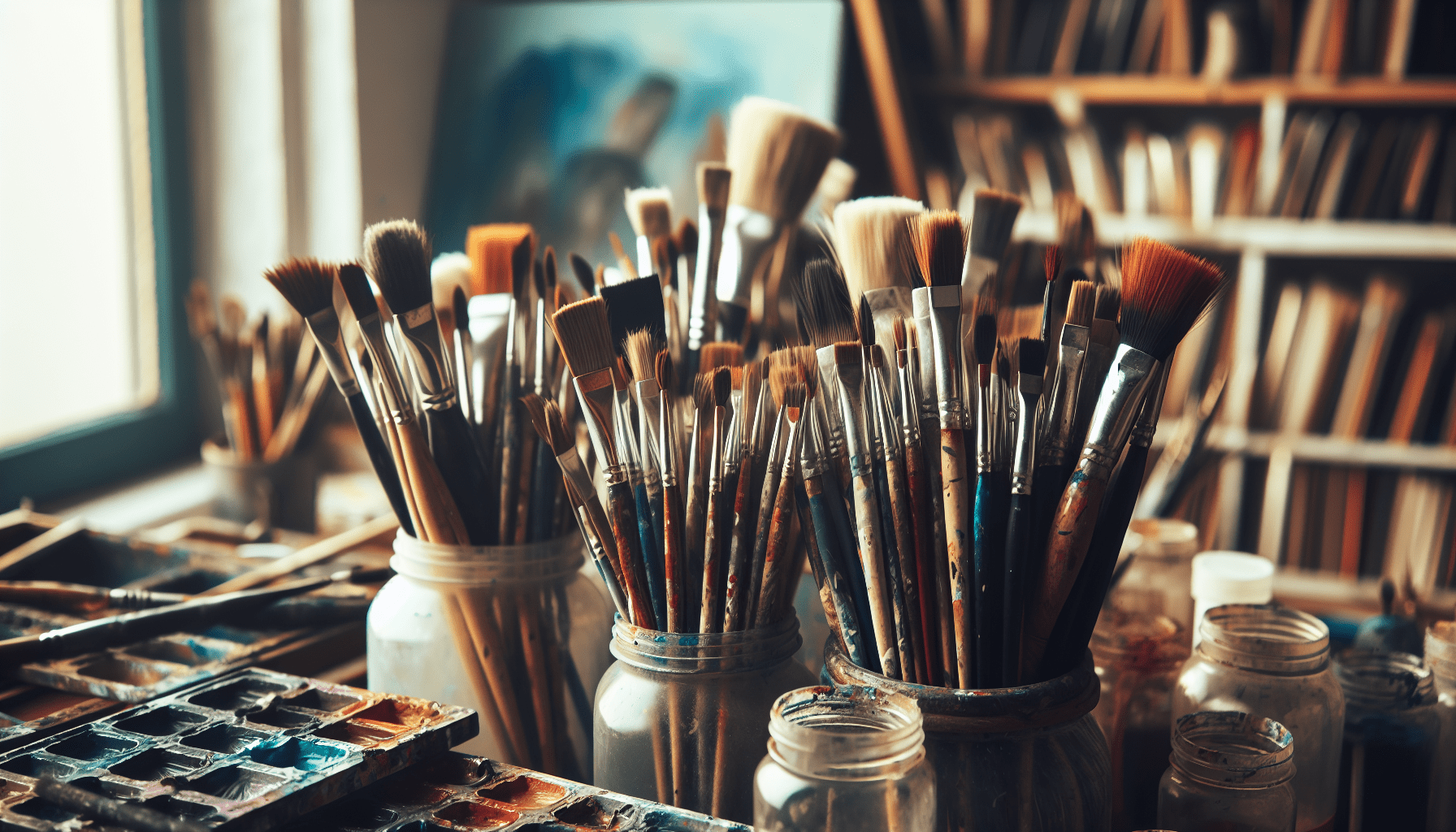In the realm of painting, a paint brush is not just a tool; it is an extension of an artist’s creativity and skill. However, all too often, these cherished tools fall victim to neglect and improper care, leading to their premature demise. In this article, you will learn invaluable techniques and tips on how to effectively preserve and save your trusty paint brushes. Mastering the art of brush maintenance will not only save you valuable time and money but also ensure that your brushes continue to be a reliable companion on your artistic journey. So, let us explore the secrets of prolonging the lifespan of your beloved paint brushes and ensure that they remain in impeccable condition for years to come.
Cleaning the Paint Brush
When it comes to cleaning a paint brush, it is important to remove excess paint before moving on to the next steps. Start by gently tapping the brush against the side of the paint can or a scrap piece of paper to get rid of any excess paint. This will prevent unnecessary mess and make the cleaning process more effective.
Next, rinse the brush bristles under warm water. Using warm water helps to loosen and remove the remaining paint from the bristles. Make sure to hold the brush by the handle and allow the water to flow over the bristles. Gently massage the bristles with your fingers to help dislodge any stubborn paint particles.
If necessary, you can use a mild soap or detergent to clean the bristles. However, it is important to avoid using harsh chemicals as they can damage the bristles. Instead, opt for a gentle cleaning solution or even just warm water. Use your fingers to gently scrub the bristles, starting from the base and working your way towards the tips. Repeat this process until the water runs clear, indicating that the brush is clean.
Using Vinegar for Stubborn Paint
For stubborn paint that is difficult to remove, vinegar can be a lifesaver. Fill a container with vinegar and soak the brush in it for a few hours or overnight. The acidity of vinegar helps to break down and dissolve the dried paint. After soaking, rinse the brush with warm water to remove any vinegar residue.
To ensure thorough cleaning, you can follow up with soap and water. Clean the brush bristles with a mild soap or detergent, gently massaging them to remove any remaining paint or vinegar. Rinse the brush again with warm water to remove any soap residue. This will leave your brush clean and ready for future use.

Reshaping the Brush
Maintaining the shape of your paint brush is essential for optimal performance. After cleaning your brush, use your fingers to reshape the bristles. Gently press and shape the bristles to straighten out any bent or misshapen areas. Applying gentle pressure from the base to the tips can help restore your brush to its original shape.
To preserve the shape of your brush, it is recommended to use a brush guard or sleeve for storage. These protective covers are designed to keep the bristles aligned and prevent them from getting damaged or misshapen. By using a brush guard or sleeve, you can ensure that your brush stays in top condition for future use.
Protecting the Brush During Use
To prevent unnecessary paint buildup and prolong the lifespan of your paint brush, it is important to take precautions during use. Avoid immersing the handle of the brush in paint, as this can cause the bristles to become loose and deteriorate over time. Instead, hold the brush near the ferrule, the metal band that connects the bristles to the handle.
Using a paint brush holder or clip-on tray can also help protect your brush during use. These holders keep the brush suspended above the paint, preventing it from coming into contact with the bottom of the container or tray. This not only prevents paint buildup on the bristles but also makes it easier to control the amount of paint on the brush.
When taking breaks during painting sessions, it is important to cover the brush to prevent the paint from drying out. Leaving the brush uncovered can lead to the formation of a hardened paint layer, making it difficult to clean and affecting the performance of the brush. Simply covering the brush with a plastic wrap or placing it in a closed container can help keep it moist and ready for use.

Storing the Paint Brush
Properly storing your paint brush after use is crucial for maintaining its quality and prolonging its lifespan. To start, make sure to clean the brush thoroughly using the techniques mentioned earlier. Remove all traces of paint and cleaning solution from the bristles by rinsing them with warm water.
After cleaning, allow the brush to air dry completely. Hang it upside down or lay it flat on a clean surface to ensure that all moisture has evaporated. This will help prevent the growth of mold or mildew, which can damage the bristles and affect the performance of the brush.
When it comes to storing the paint brush, it is best to keep it in its original packaging or a specially designed brush holder. The original packaging is designed to protect the bristles and maintain their shape, ensuring that your brush is ready for use whenever you need it. If the original packaging is not available, a brush holder can provide a similar level of protection by keeping the bristles aligned and preventing them from getting bent or damaged.
Reviving a Hardened Brush
If you accidentally leave your paint brush with dried paint and it becomes hardened, don’t worry. There are steps you can take to revive it and bring it back to life. Begin by soaking the brush in warm soapy water. This helps to loosen the dried paint and make it easier to remove.
For more stubborn cases, you can mix fabric softener with warm water and soak the brush in this solution overnight. The fabric softener works as a paint softener, helping to break down the hardened paint on the bristles. After soaking, gently scrub the bristles with a brush comb to remove any remaining paint or debris.
Finally, rinse the brush under warm water to remove any residue from the cleaning solution. It is crucial to rinse the bristles thoroughly to ensure that no fabric softener or soap remains. This will leave your brush clean, soft, and ready for use once again.
Preventing Paint from Drying on the Brush
To prevent paint from drying on your brush while working, there are a few simple steps you can take. First, keep the brush moist by occasionally dipping it in water or solvent, depending on the type of paint you are using. This keeps the bristles hydrated and prevents the paint from drying out and hardening on the brush.
Using a wet palette is another effective way to prevent paint from drying on the brush. A wet palette is a palette with a water reservoir that keeps the paint moist for longer periods of time. By keeping the paint wet, you can minimize the chances of it drying on your brush and affecting its performance.
When taking breaks during painting sessions, it is important to cover both the paint tray and the brush. Covering the paint tray ensures that the paint stays moist and usable. Meanwhile, covering the brush prevents the paint on the bristles from drying out and forming a hardened layer. This simple step can save you time and effort when it’s time to clean and reuse your brush.
Using Brush Cleaner and Conditioner
For professional painters or those who frequently use paint brushes, investing in a brush cleaner and conditioner can be highly beneficial. These products are specifically designed to effectively clean and condition paint brushes, helping to prolong their lifespan and maintain their performance.
When using a brush cleaner and conditioner, it is important to carefully read and follow the instructions provided by the manufacturer. Typically, you will need to apply the cleaner to the brush bristles and gently massage them to ensure thorough cleaning. Afterward, rinse the brush with warm water to remove any residue from the cleaning product.
Regular use of a brush cleaner and conditioner can help remove stubborn paint residues, condition the bristles, and extend the life of your paint brushes. It is a worthwhile investment for individuals who rely heavily on their brushes for their work.
Using a Paint Brush Comb
A paint brush comb is a handy tool for maintaining the cleanliness and condition of your paint brushes. It helps remove any dried paint or debris that may have become stuck in the bristles, ensuring that your brush is clean and ready for use.
To use a paint brush comb, simply run the brush through the comb’s teeth. This action helps to dislodge any dried paint or debris and straighten the bristles. As you comb through the bristles, you can also use your fingers to manually remove any stubborn particles.
After combing the brush, it is recommended to clean it with water to remove any loosened paint or debris. This will leave your brush in optimal condition and prevent any unwanted particles from affecting your artwork.
Taking Care of Natural vs Synthetic Brushes
Different types of paint brushes require slightly different care to ensure their longevity and optimal performance. Natural brushes, typically made from animal hair, should be cleaned with mild soap or detergent. Avoid using hot water on natural brushes, as it can cause the bristles to become brittle and damaged.
After cleaning, natural brushes should be thoroughly dried to prevent the growth of mold or mildew. Shake off excess water and gently reshape the bristles before leaving the brush to air dry completely. Once dried, store natural brushes upright to maintain their shape and integrity.
On the other hand, synthetic brushes are generally more resilient and can withstand hot water. After cleaning, make sure to dry synthetic brushes completely to prevent the buildup of moisture in the bristles. Store them in a dry, upright position to maintain their shape and prevent any damage to the bristles.
By understanding the specific care requirements for natural and synthetic brushes, you can ensure that your paint brushes remain in excellent condition and continue to provide outstanding results.
(end of article)



